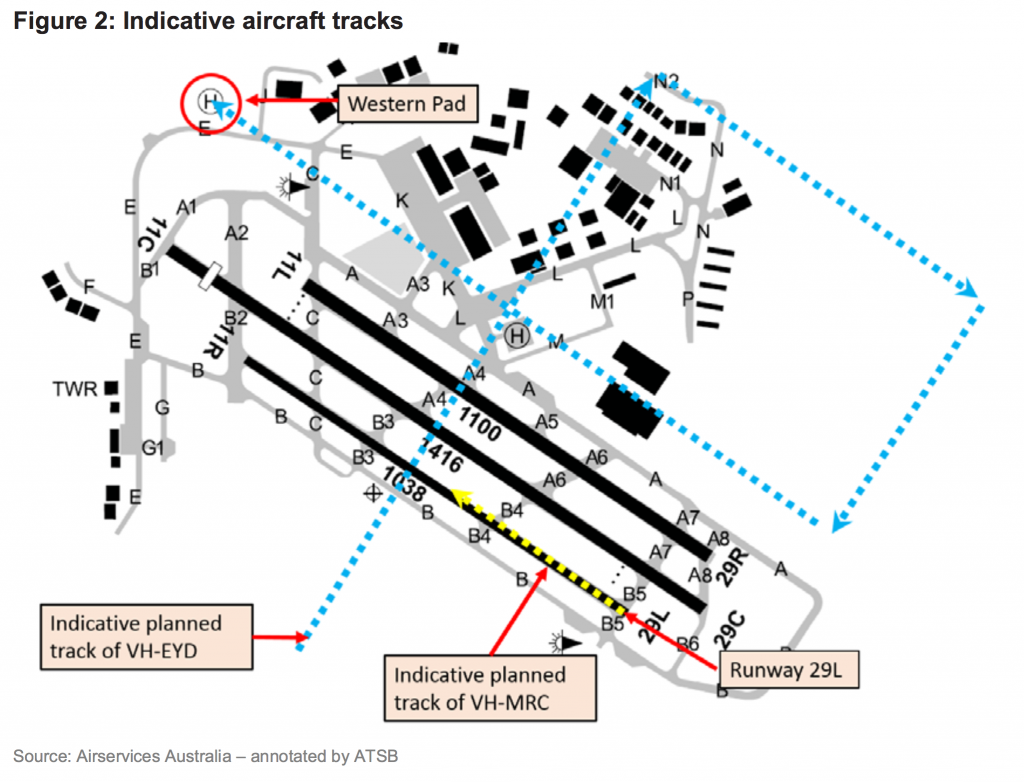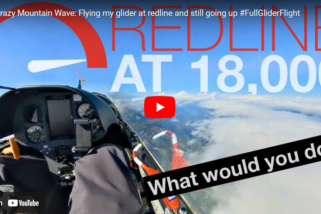A Robinson R44 helicopter departed from Bankstown Airport (near Sydney, Australia), on a training flight to Camden Airport, New South Wales. On board were a student pilot and a flight instructor. After completing exercises in the Camden area, the helicopter returned towards Bankstown.
According to air traffic control (ATC) audio data, at about 1607 Eastern Standard Time (EST), the instructor of the R44 contacted the Bankstown aerodrome controller (ADC), advising that they were at inbound reporting point 2RN at 1,000ft. The ADC instructed the R44 to track via, and report at, ‘Choppers South’ reporting point at 500ft. The R44 then tracked via Choppers South at 500ft, but the instructor omitted to advise ADC when they were overhead that point.
At about 1610, the solo student pilot of a Cessna 152 aircraft, who was conducting circuit training at Bankstown Airport, contacted the ADC and stated that the C152 was on the downwind circuit leg, and requested clearance to depart the control zone on the upwind circuit leg. The ADC instructed the pilot of the C152 to ‘go around from base, maintain 1,000ft and depart on upwind’.
The pilot of the C152 asked the ADC to repeat the instruction and then read back ‘MRC going around from base and depart at 1,000ft’. The pilot of the C152 then continued their approach, descending on the base leg and final approach to about 300ft above the runway before commencing a go-around. At about 1613, passing about 500ft on climb, the pilot of the R44 advised the ADC that they were going around and departing at 1,000ft upwind.

The ADC reported that they sighted the R44 about mid-way along the runway, lower than the assigned altitude of 1,000ft, and also sighted the C152 about 200m away at about the same altitude (Figure 2). The ADC immediately issued a safety alert to the pilot of the C152 advising of a helicopter to their left crossing midfield at 500ft. The ADC then issued a safety alert to the R44 advising of the Cessna in the go-around.
The instructor of the R44 had already sighted the C152 and commenced a right turn to increase separation. On receiving the safety alert, the pilot of the R44 continued the right turn to pass behind the C152. The R44 landed at the western helipad without further incident. The C152 departed to the training area, before returning to land at Bankstown Airport, also without further incident.
Pilot comments
The pilot of the C152 was a student with 41 hours of aeronautical experience, six of which were solo. The pilot provided the following comments:
- The pilot had not departed from the circuit runway to the training area previously and was not sure how to do so or what to expect from ATC.
- The pilot’s understanding of a go-around was to descend as if on a normal approach to the runway, discontinue the approach on final at about 300ft, apply full power and commence a climb, and diverge to the left of the runway.
- The pilot misunderstood the ADC’s instruction, but was unsure why the controller had not noticed the aircraft descending on base and final before it commenced the go-around.
- The pilot was not aware of the Choppers South arrival procedure until after the incident.
- If the instruction had been sequenced differently, with the direction to maintain 1,000ft first, it would have made the ADC’s expectations clearer.
Controller comments
The ADC commented that if the pilot of the C152 had maintained 1,000ft there would not have been a separation issue. Having issued the instruction to maintain 1,000ft, the ADC turned their focus to monitoring other aircraft and communicating with the pilots of other aircraft in the control zone.
The controllers have a liaison role with local flying schools, which involves visiting them and talking to the students, and they also invite students to the tower during quiet periods. This liaison fosters a safer working relationship between pilots and air traffic control.







